Filter by
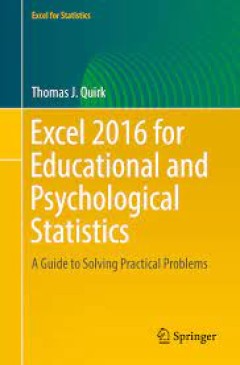
Excel 2016 for Educational and Psychological Statistics
This book shows the capabilities of Microsoft Excel in teaching educational and psychological statistics effectively. Similar to the previously published Excel 2013 for Educational and Psychological Statistics, this book is a step-by-step exercise-driven guide for students and practitioners who need to master Excel to solve practical education and psychology problems. If understanding statistic…
- Edition
- -
- ISBN/ISSN
- 978-3-319-39720-7
- Collation
- Springer International
- Series Title
- -
- Call Number
- -
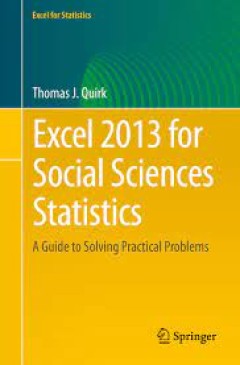
Excel 2013 for Social Sciences Statistics
This is the first book to show the capabilities of Microsoft Excel to teach social science statistics effectively. It is a step-by-step exercise-driven guide for students and practitioners who need to master Excel to solve practical social science problems. If understanding statistics isn’t your strongest suit, you are not especially mathematically-inclined, or if you are wary of computers, t…
- Edition
- -
- ISBN/ISSN
- 978-3-319-19177-5
- Collation
- 167 illustrations in colour
- Series Title
- -
- Call Number
- -
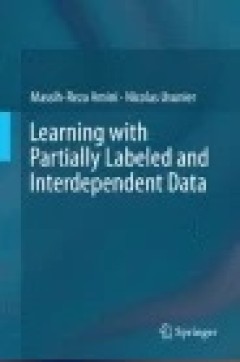
Learning with Partially Labeled and Interdependent Data
This book develops two key machine learning principles: the semi-supervised paradigm and learning with interdependent data. It reveals new applications, primarily web related, that transgress the classical machine learning framework through learning with interdependent data. The book traces how the semi-supervised paradigm and the learning to rank paradigm emerged from new web applications, …
- Edition
- -
- ISBN/ISSN
- 978-3-319-15726-9
- Collation
- -
- Series Title
- -
- Call Number
- -

The 1st International Workshop on the Quality of Geodetic Observation and Mon…
These proceedings contain 25 papers, which are the peer-reviewed versions of presentations made at the 1st International Workshop on the Quality of Geodetic Observation and Monitoring (QuGOMS’11), held 13 April to 15 April 2011 in Garching, Germany. The papers were drawn from five sessions which reflected the following topic areas: (1) Uncertainty Modeling of Geodetic Data, (2) Theoretical St…
- Edition
- -
- ISBN/ISSN
- 978-3-319-10828-5
- Collation
- VIII, 183
- Series Title
- International Association of Geodesy Symposia
- Call Number
- -
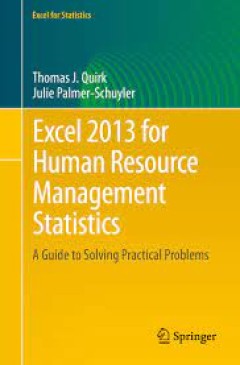
Excel 2013 for Human Resource Management Statistics
This book shows how Microsoft Excel is able to teach human resource management statistics effectively. Similar to the previously published Excel 2010 for Human Resource Management Statistics, it is a step-by-step exercise-driven guide for students and practitioners who need to master Excel to solve practical human resource management problems. If understanding statistics isn’t your strongest …
- Edition
- -
- ISBN/ISSN
- 978-3-319-28982-3
- Collation
- Springer International
- Series Title
- -
- Call Number
- -

Turning Points in the History of Mathematics
This book explores some of the major turning points in the history of mathematics, ranging from ancient Greece to the present, demonstrating the drama that has often been a part of its evolution. Studying these breakthroughs, transitions, and revolutions, their stumbling-blocks and their triumphs, can help illuminate the importance of the history of mathematics for its teaching, learning, and …
- Edition
- -
- ISBN/ISSN
- 978-1-4939-3264-1
- Collation
- IX, 109
- Series Title
- -
- Call Number
- -
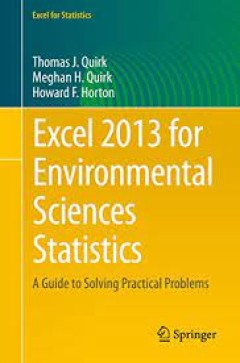
Excel 2013 for Environmental Sciences Statistics A Guide to Solving Practica…
This is the first book to show the capabilities of Microsoft Excel to teach environmentall sciences statistics effectively. It is a step-by-step exercise-driven guide for students and practitioners who need to master Excel to solve practical environmental science problems. If understanding statistics isn’t your strongest suit, you are not especially mathematically-inclined, or if you are wa…
- Edition
- -
- ISBN/ISSN
- 978-3-319-23977-4
- Collation
- 163 b/w illustrations, 2 illustrations in colour
- Series Title
- -
- Call Number
- -
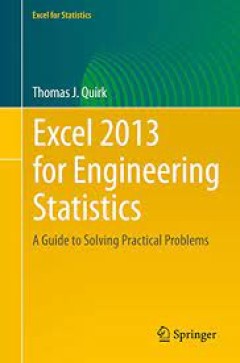
Excel 2013 for Engineering Statistics A Guide to Solving Practical Problems
This is the first book to show the capabilities of Microsoft Excel to teach engineering statistics effectively. It is a step-by-step exercise-driven guide for students and practitioners who need to master Excel to solve practical engineering problems. If understanding statistics isn’t your strongest suit, you are not especially mathematically-inclined, or if you are wary of computers, this …
- Edition
- -
- ISBN/ISSN
- 978-3-319-23555-4
- Collation
- 1 b/w illustrations, 161 illustrations in colour
- Series Title
- -
- Call Number
- -

Excel 2013 for Educational and Psychological Statistics A Guide to Solving P…
This is the first book to show the capabilities of Microsoft Excel to teach educational and psychological statistics effectively. It is a step-by-step exercise-driven guide for students and practitioners who need to master Excel to solve practical problems in education and psychology. If understanding statistics isn’t your strongest suit, you are not especially mathematically-inclined, or i…
- Edition
- -
- ISBN/ISSN
- 978-3-319-26712-8
- Collation
- 162 b/w illustrations, 4 illustrations in colour
- Series Title
- -
- Call Number
- -
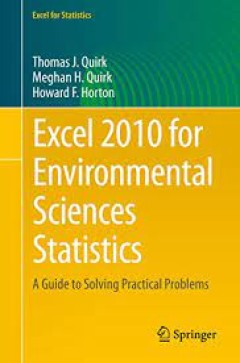
Excel 2010 for Environmental Sciences Statistics A Guide to Solving Practica…
This is the first book to show the capabilities of Microsoft Excel to teach environmental sciences statistics effectively. It is a step-by-step exercise-driven guide for students and practitioners who need to master Excel to solve practical environmental sciences problems. If understanding statistics isn’t your strongest suit, you are not especially mathematically-inclined, or if you are wa…
- Edition
- -
- ISBN/ISSN
- 978-3-319-23971-2
- Collation
- 160 b/w illustrations, 2 illustrations in colour
- Series Title
- -
- Call Number
- -
 Computer Science, Information & General Works
Computer Science, Information & General Works  Philosophy & Psychology
Philosophy & Psychology  Religion
Religion  Social Sciences
Social Sciences  Language
Language  Pure Science
Pure Science  Applied Sciences
Applied Sciences  Art & Recreation
Art & Recreation  Literature
Literature  History & Geography
History & Geography